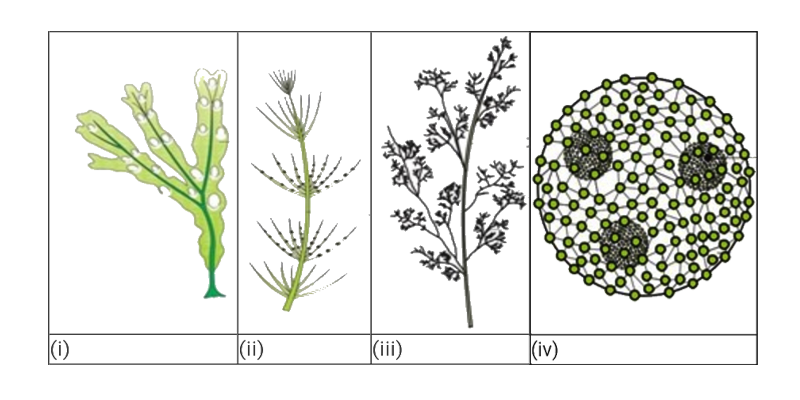Haplodiplontic life cycle is observed in
Bryophyta
Pteridophyta
Most of the Algae
Both (a) and ( b)
The correct Answer is:D
Step-by-Step Solution:
1. Understanding the Haplodiplontic Life Cycle:
- The haplodiplontic life cycle is characterized by the alternation of generations between two distinct phases: the haploid phase (gametophyte) and the diploid phase (sporophyte).
- In this life cycle, the gametophyte produces haploid gametes through mitosis, while the sporophyte produces diploid spores through meiosis.
2. Identifying the Organisms:
- The organisms that exhibit a haplodiplontic life cycle include bryophytes (such as mosses and liverworts) and pteridophytes (such as ferns).
- Both groups show a clear alternation between the haploid gametophyte and the diploid sporophyte.
3. Excluding Other Groups:
- While algae can have varied life cycles, they do not consistently exhibit a haplodiplontic life cycle like bryophytes and pteridophytes do.
- Therefore, we can conclude that the haplodiplontic life cycle is not observed in algae.
4. Final Answer:
- The correct answer to the question is that the haplodiplontic life cycle is observed in bryophytes and pteridophytes.
- The haplodiplontic life cycle is characterized by the alternation of generations between two distinct phases: the haploid phase (gametophyte) and the diploid phase (sporophyte).
- In this life cycle, the gametophyte produces haploid gametes through mitosis, while the sporophyte produces diploid spores through meiosis.
- The organisms that exhibit a haplodiplontic life cycle include bryophytes (such as mosses and liverworts) and pteridophytes (such as ferns).
- Both groups show a clear alternation between the haploid gametophyte and the diploid sporophyte.
- While algae can have varied life cycles, they do not consistently exhibit a haplodiplontic life cycle like bryophytes and pteridophytes do.
- Therefore, we can conclude that the haplodiplontic life cycle is not observed in algae.
- The correct answer to the question is that the haplodiplontic life cycle is observed in bryophytes and pteridophytes.
Similar Questions
Knowledge Check
Haplo-diplontic life cycle is found in
AbryophytesBpteridophytesCfungiDboth a and b
Haplontic life cycle is represented by
View SolutionDiplontic life cycle is seen in ________.
View SolutionWith the help of a schematic diagram describe the haplodiplontic life cycle pattern of a plant group.
View SolutionRead the following statements.
(a) Volvox does not have a free living sporophyte.
(b) All alga show haplontic life cycle.
(c) Sporophyte of Fucus is dominant and photosynthetic.
(d) All seed bearing plants have diplontic life cycle
(e) Bryophytes have haplodiplontic life cycle
Select the option with correct set of statements.
View SolutionTriphasic life cycle is present in
View SolutionWhich of these algae have a haplo - diplontic life cycle ?

View SolutionLife cycle in ferns is
View Solution
